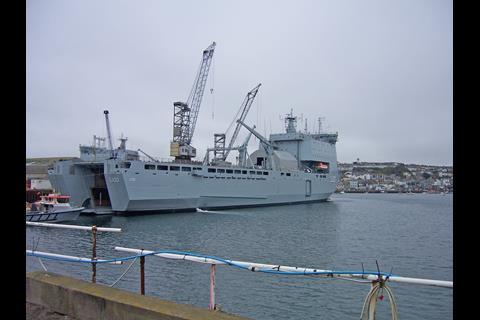The Swan Hunter Shipyard buildings that were located in the dockyards on the banks of the River Tyne are historically well known as an iconic industrial image of the North East.
The Rubb marine structures dominated the Newcastle skyline for more than 25 years.
Swan Hunters began life as a shipbuilder back in 1880. Over time the company built more than 1,600 ships, becoming famous around the world. Aircraft carriers, passenger liners, cargo liners, ferries, ice breakers, destroyers, frigates and submarines were constructed by Swans’ highly-skilled, local workforce. The company’s final ship build was the Royal Navy frigate - RFA Largs Bay, which left Swan Hunter’s Wallsend dock in 2006. Since then Rubb has also supported this vessel by manufacturing an onboard storage building, custom-crafted for the deck of the ship for the MoD’s department of Defence Equipment and Support.
Swan Hunter’s Rubb maritime buildings were originally manufactured by Rubb Buildings Ltd back in 1982. The two BVL structures, measuring 27m span x 24m long, with 11.7m high sidewalls, were used to house the ships while being manufactured. These buildings were custom designed with a roller and track system to allow the building to slide along the dock with ease. When shipbuilding ceased at the Wallsend yard, the structures were dismantled and placed in storage.
In 2014 the former shipyard buildings were brought back to life as they were erected and brought back in to service at Wilton Engineering Services. Wilton specialises in engineering design, fabrication/construction, analysis, and coatings for the energy industry by the River Tees in Middlesbrough. Wilton Engineering worked closely with Rubb to reconfigure the original Swan Hunter structures by adding a door system that would give a clear opening of approximately 21m wide by 10m high. This would allow parts and equipment to be easily transported in and out of the building for shot blasting and painting.
The hot dip galvanized steel framework of the Rubb structures has proved to be long-lasting and durable – at 36 years old, the structures are still able to perform in meet the client’s needs. The long life and continued re-use of these industrial fabric structures is an example of the longevity, value and flexibility of Rubb industrial buildings.
In recent years Swans has enter the offshore market with the introduction of their Offshore Energy Park, for companies in the offshore energy, subsea and marine industries. The park will boast 17 hectares of development land with £26m investment secured for improvements, including Enterprise Zone status providing simplified planning regimes for new buildings. The park also offers a fully operational 400m deep water quay with heavy load out facilities and access to the North Sea.











